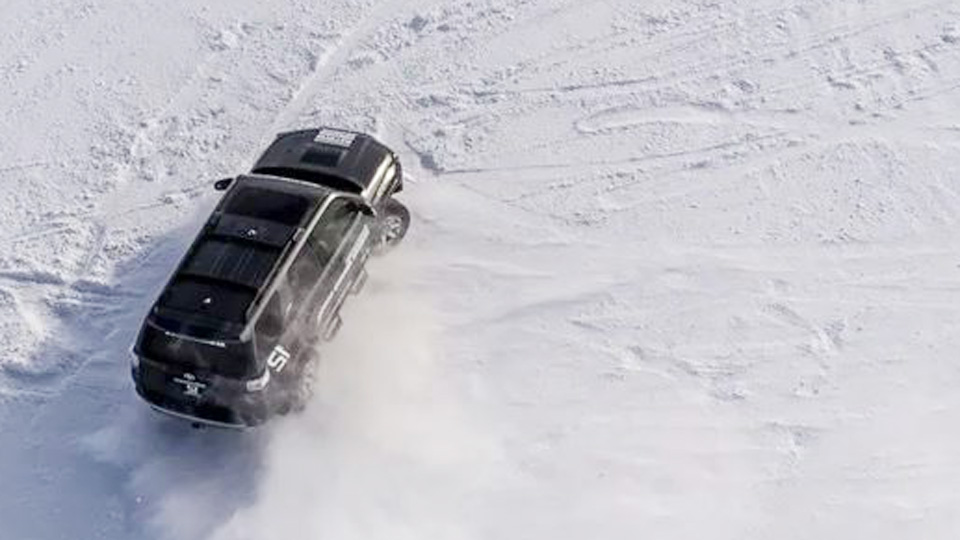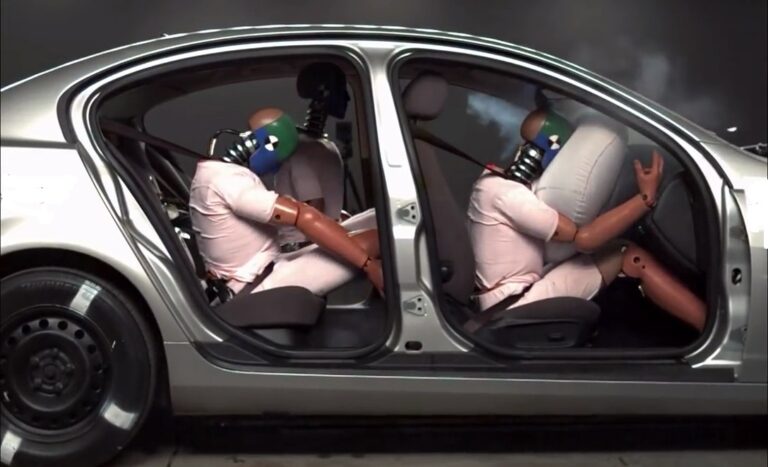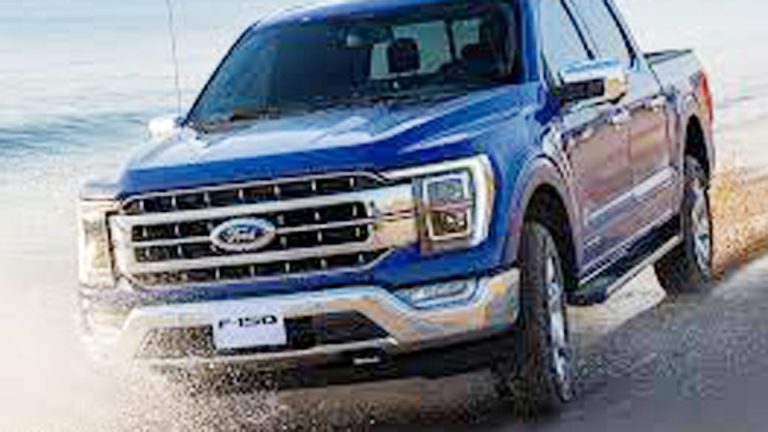You’re driving down a snowy road, minding your own business, when suddenly your car starts sliding on ice. Your heart races as the wheels lose grip, and you’re left wondering what to do when your car is sliding on ice. As a car enthusiast who’s spent years navigating icy Midwest winters in my Ford F-150 and helping friends with their Subarus and Chevys, I’ve been there more times than I’d like to admit.
Sliding on ice is terrifying, but knowing how to react can keep you safe. Let’s break down why cars slide, how to regain control, and how to prepare your vehicle for winter driving across the USA, from Minnesota’s frozen highways to Colorado’s snowy mountain passes.

Image by foxweather
Why Cars Sliding on Ice
Ice reduces tire traction to almost nothing, turning your car into a 4,000-pound sled. When tires can’t grip the road, any sudden input—steering, braking, or accelerating—can cause a skid. There are two main types of skids:
- Oversteer: The rear wheels lose traction, causing the back end to swing out (common in rear-wheel-drive cars like my F-150).
- Understeer: The front wheels slide, making the car plow straight instead of turning (typical in front-wheel-drive cars like a Honda Civic).
Snow, black ice, or slush amplifies this, especially in cold US climates where temperatures dip below freezing. I learned this the hard way when my old Chevy Silverado fishtailed on a Michigan backroad—luckily, a quick correction saved me from a ditch.
Why It Matters: Skidding on ice can lead to collisions, rollovers, or getting stuck. Knowing how to respond and prevent slides keeps you and others safe.
Immediate Steps to Take When Sliding on Ice
If your car starts sliding, staying calm and making the right moves is critical. Here’s what I do when I feel the wheels lose grip, based on years of winter driving.
Stay Calm and Look Where You Want to Go
Panicking makes things worse. Keep your eyes on where you want the car to go, not the obstacle you’re trying to avoid. Your hands naturally follow your eyes, helping steer out of the skid.
Real-World Example: On an icy Ohio road, my wife’s CR-V started sliding toward a guardrail. I told her to focus on the road ahead, not the rail, and she steered out of it.
Ease Off the Gas and Brakes
Slamming the brakes or accelerating can worsen the skid. Gently lift your foot off the gas to let the car slow naturally. If you must brake, do it lightly to avoid locking the wheels.
Warning: Hard braking on ice can cause your anti-lock brakes (ABS) to pulse, which feels like shuddering. Don’t panic—this is normal and helps maintain control.
Steer Into the Skid – Car Sliding on Ice
This sounds counterintuitive, but it works. If the rear end slides right, steer right to align the wheels with the skid. As the car straightens, gently counter-steer to stay on course.
- Oversteer: Steer in the direction the rear is sliding (e.g., rear slides left, steer left).
- Understeer: Ease off the gas and turn the wheel slightly less to regain front tire grip.
My Experience: My F-150’s rear end swung out on a snowy ramp once. Steering into the skid and easing off the gas brought it back in line in seconds.
Use Gentle Inputs – Car Sliding on Ice
Jerky steering or braking makes skids worse. Make smooth, deliberate movements to give your tires a chance to regain traction.
Wait for Traction
Once you’ve corrected the skid, don’t overreact. Wait until you feel the tires grip before accelerating or turning sharply. Patience is key on ice.
| Action | Why It Works | When to Use |
|---|---|---|
| Stay Calm | Prevents panic-induced errors | Always |
| Ease Off Gas/Brakes | Reduces wheel spin or lockup | Immediately |
| Steer Into Skid | Aligns wheels with slide | During oversteer |
| Gentle Inputs | Maintains tire grip | Throughout skid |
| Wait for Traction | Prevents new skid | After correction |
Preventing Skids Before They Happen
The best way to handle sliding on ice is to avoid it altogether. Here’s how I prep my vehicles and drive to minimize skids in US winters.
Install Winter Tires – Car Sliding on Ice
Winter tires are a game-changer. Their soft rubber and deep sipes grip snow and ice better than all-season tires, which harden in cold. I switched to Michelin X-Ice Snow tires on my wife’s CR-V, and it’s like driving on glue compared to all-seasons.
- What to Look For: Tires with the Three-Peak Mountain Snowflake symbol (e.g., Bridgestone Blizzak, Nokian Hakkapeliitta).
- Cost: $400–$1,000 for a set, depending on size.
Pro Tip: Check tread depth with a penny—Lincoln’s head should be partly covered for safe winter driving (6/32-inch minimum).
Check Tire Pressure – Car Sliding on Ice
Cold weather lowers tire pressure, reducing grip. Check pressure monthly (add 2–3 psi in winter, per your car’s manual) and inflate when tires are cold.
Real-World Tip: My F-150’s low-pressure warning lit up during a Minnesota cold snap. Inflating to 35 psi restored grip and stopped minor sliding.
Maintain Your Vehicle – Car Sliding on Ice
A well-maintained car handles ice better. Before winter:
- Brakes: Ensure pads and rotors are in good shape to avoid uneven braking.
- Suspension: Check tie rods and bushings for wear—loose parts amplify skids.
- Fluids: Use winter-grade washer fluid and check coolant for freeze protection.
- Wipers: Replace worn blades to maintain visibility.
Cost: $50–$200 for basic maintenance.
Drive Defensively – Car Sliding on Ice
How you drive matters as much as your car’s setup. My winter driving rules:
- Slow Down: Reduce speed by 10–20 mph on icy roads.
- Increase Following Distance: Leave 8–10 seconds between you and the car ahead.
- Avoid Sudden Moves: Accelerate, brake, and turn gradually.
- Use Low Gears: In manuals or automatics with manual mode, use lower gears for better control.
My Experience: On a snowy Colorado pass, I kept my Ram in 4WD low and crawled at 20 mph. No skids, even on black ice.
Use Traction Aids
For extreme conditions, consider:
- Tire Chains: Great for deep snow or ice ($50–$150).
- Traction Mats: Place under tires if stuck ($20–$50).
- Sand or Kitty Litter: Sprinkle for extra grip if spinning ($5–$10).
Warning: Chains can damage roads or tires if used on dry pavement. Remove them when not needed.
| Prevention Method | Cost | Effectiveness | Difficulty |
|---|---|---|---|
| Winter Tires | $400–$1,000 | High | Moderate |
| Check Tire Pressure | $0–$10 (gauge) | Moderate | Easy |
| Vehicle Maintenance | $50–$200 | High | Moderate |
| Defensive Driving | $0 | High | Easy |
| Traction Aids | $5–$150 | Moderate | Easy |
Vehicle Features That Help on Ice
Modern cars come with tech to prevent or manage skids. Here’s what to know and how to use them.
Anti-Lock Brakes (ABS)
ABS prevents wheel lockup during hard braking, maintaining steering control. You’ll feel a pulsing pedal on ice—this is normal. Don’t pump the brakes; apply steady pressure.
Traction Control (TCS)
TCS reduces wheel spin by cutting power or applying brakes to slipping wheels. It’s great for starting on ice but can limit power in deep snow. Some cars let you turn it off for better control.
My Experience: My Ram’s TCS kicked in on an icy hill, preventing a slide but stalling progress in deep snow. Turning it off let me power through.
Electronic Stability Control (ESC) – Car Sliding on Ice
ESC detects skids and corrects them by braking individual wheels or adjusting power. It’s standard on most US cars and a lifesaver on ice. Keep it on unless stuck in deep snow.
Four-Wheel Drive (4WD) or All-Wheel Drive (AWD)
4WD and AWD improve traction for starting and climbing but don’t prevent skids when braking or turning. My F-150’s 4WD helps on snowy trails, but I still ease into turns on ice.
Warning: Don’t rely on 4WD/AWD to “save” you on ice. Drive cautiously, even with advanced systems.
What to Do If You Get Stuck After a Slide
Sometimes, a skid leaves you stuck in snow or a ditch. Here’s how I get unstuck, based on countless winter rescues.
Step 1: Stay Calm and Assess
Turn on hazard lights and check for traffic. If you’re in a ditch, stay in the car unless it’s safe to exit. Call for help if you’re stranded in a remote area.
Step 2: Clear the Area
Shovel snow from around tires and under the car. Use a folding shovel ($20) or improvise with a hubcap. Sprinkle sand or kitty litter for grip.
Step 3: Rock the Car
Shift between Drive and Reverse, gently accelerating to rock the car out. Don’t spin the wheels—it digs you deeper.
Step 4: Use Traction Aids
Place mats, branches, or gravel under tires for extra grip. Chains can help if you have them.
Step 5: Call for Help
If you can’t get unstuck, call a tow truck or roadside assistance. In freezing states like Alaska, stay warm with blankets and a full gas tank while waiting.
Cost: $0–$150 for tools; $100–$300 for towing.
Real-World Example: My neighbor’s Subaru Outback slid into a snowy ditch in Wisconsin. We used kitty litter and a shovel to free it in 20 minutes—no tow needed.
Winter Driving Tips for US Conditions – Car Sliding on Ice
US winters vary wildly, from slushy Seattle streets to icy New England hills. Here’s how to handle ice region by region:
Northeast (e.g., Vermont): Black ice is common. Use winter tires and keep a slow, steady pace.
Midwest (e.g., Michigan): Heavy snow and salt demand frequent tire checks and vehicle washes to prevent corrosion.
Mountain West (e.g., Colorado): Steep, icy roads require chains or 4WD and low gears.
South (e.g., North Carolina): Rare ice catches drivers off guard. Even all-season tires need 6/32-inch tread for occasional freezes.
Pacific Northwest (e.g., Oregon): Wet snow and slush call for deep-tread winter tires and cautious braking.
Common Mistakes to Avoid – Car Sliding on Ice
- Slamming the Brakes: Locks wheels and worsens skids. Use gentle, steady pressure.
- Overcorrecting: Jerky steering can spin you out. Steer smoothly into the skid.
- Ignoring Tire Condition: Bald or all-season tires are useless on ice. Invest in winter tires.
- Driving Too Fast: Speed amplifies skids. Slow down, even if roads look clear.
- Not Practicing: Find an empty lot to practice skid recovery before you need it.
My Experience: I once overcorrected a skid in my Silverado, nearly spinning out. Practicing in a snowy lot later taught me to steer calmly.
Emergency Kit for Winter Driving – Car Sliding on Ice
An ice slide can leave you stranded, so I keep an emergency kit in my truck. Here’s what’s in it:
| Item | Purpose | Cost |
|---|---|---|
| Folding Shovel | Dig out snow | $20 |
| Kitty Litter/Sand | Traction aid | $5–$10 |
| Blanket | Stay warm | $10–$20 |
| Flashlight | Visibility | $10–$30 |
| Jumper Cables | Dead battery | $20–$50 |
| Food/Water | Survival | $10 |
| First-Aid Kit | Minor injuries | $15–$30 |
Total Cost: $90–$185.
Pro Tip: Check your kit annually and replace expired food or batteries.
Choosing Winter Tires for US Cars
Winter tires are your best defense against ice. Here’s what to look for:
- Tread Design: Deep sipes and wide grooves (e.g., Nokian Hakkapeliitta).
- Size: Match your car’s tire size (check sidewall or manual).
- Brand: Michelin X-Ice, Bridgestone Blizzak, or Nokian are top picks.
- Studded vs. Non-Studded: Studded tires grip ice better but are illegal in some states (e.g., parts of Minnesota). Check local laws.
My Pick: Michelin X-Ice Snow ($600 for a set) transformed my CR-V’s handling on icy roads.
| Tire Brand | Price (Set of 4) | Best For |
|---|---|---|
| Michelin X-Ice Snow | $600–$1,000 | All-around winter performance |
| Bridgestone Blizzak | $500–$900 | Deep snow and ice |
| Nokian Hakkapeliitta | $600–$1,200 | Extreme cold and ice |
Conclusion – Car Sliding on Ice
Sliding on ice is every driver’s nightmare, but knowing what to do when your car is sliding can turn a scary moment into a controlled recovery. Stay calm, steer into the skid, and ease off the pedals to regain traction.
Better yet, prevent skids with winter tires, proper maintenance, and defensive driving tailored to US winters. From snowy mountain passes to icy city streets, a prepared driver is a safe driver. Keep your car ready, practice your skills, and you’ll handle ice.
Practice skid recovery in an empty, snowy parking lot. A few minutes of sliding around safely can build confidence for real-world ice.
FAQ
Why does my car slide on ice even with new tires?
All-season tires harden in cold, losing grip. Switch to winter tires with the Three-Peak Mountain Snowflake symbol for better ice traction.
Can I stop a skid by braking hard?
No, hard braking locks wheels and worsens skids. Ease off the brakes and steer into the skid to regain control.
Are 4WD cars better on ice?
4WD helps with acceleration but doesn’t prevent skids when braking or turning. Winter tires and cautious driving are still essential.
How often should I check tire pressure in winter?
Check monthly, as cold weather lowers pressure. Add 2–3 psi above the recommended level (per your manual) for better grip.
What’s the best way to get unstuck from ice?
Clear snow around tires, sprinkle sand or kitty litter, and rock the car between Drive and Reverse. Use a shovel or traction mats if needed.




